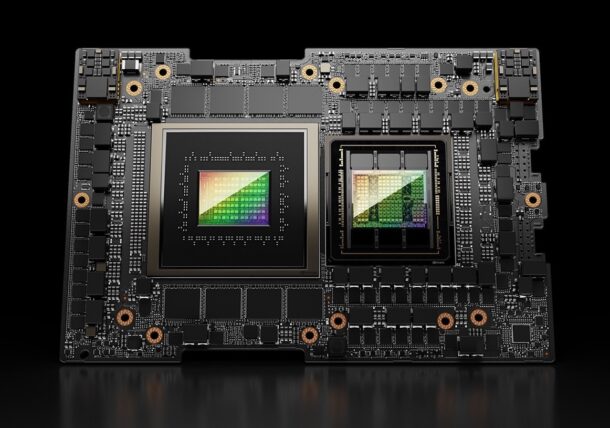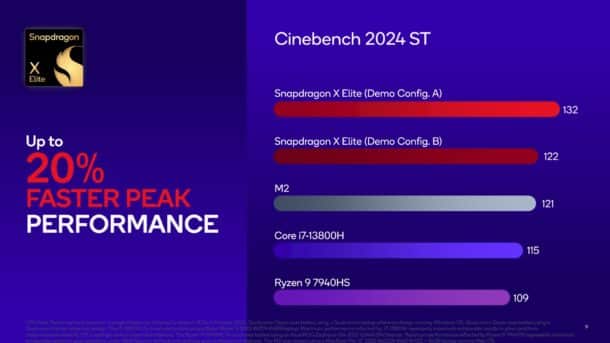Nvidia plans to enter the ARM SoC market for Windows on ARM in the early fall of 2025, according to DigiTimes. The news is exciting for several reasons, not least of which is the fact that Nvidia will be leveraging its own GPU chip design expertise, which will merge with classic ARM architecture advantages.
NVIDIA ARM
Nvidia’s client PC platform roadmap is reported to be ambitious, with multiple designs in development, including both Nvidia-only-based designs and designs in partnership with Taiwan’s MediaTek, an existing ARM chip provider.
Nvidia already has experience developing an ARM CPU in its Grace CPUs, which are based on the ARM architecture. These chips combine with Nvidia Hopper architecture-based GPUs to create the Nvidia Grace Hopper Superchip. It is theoretically possible that this formulation in a smaller size could be created for the Windows on ARM market, but more likely, Nvidia will deliver an SoC that combines a GPU, CPU, and AI chip into a single piece of silicon with shared integrated memory, similar to Apple’s M-series chips.

Nvidia’s Grace CPU is an ARM-architecture wonder, seen here paired with Nvidia Hopper architecture GPUs.
Scheduled for September of 2025, the first ARM SoC for the Windows market from Nvidia will likely target the high-end consumer market and be fit for purpose in laptops and small form-factor (SFF) desktops and workstation computers running Windows on ARM operating systems.
ARM Options
An SoC on ARM is not uncharted territory for Nvidia. They first delivered such a chip with their Tegra SoC. Nvidia may also surprise the market with an ARM SoC that pairs with a discreet Nvidia GPU and goes head-to-head with the top-performing systems from AMD and Intel for gaming PCs. Such systems would also appeal to professional users who need high-performance graphics plus the fastest CPUs they can obtain.
This is where the AEC market and CAD markets, in general, come into play. Leading workstation makers like BOXX Technologies deliver extremely high-performing professional workstations with both certified professional GPUs and top gaming-oriented GPU options. An ARM chip that can compete with Apple’s leadership in single-threaded performance combined with Nvidia’s top GPU technology would awaken the possible in the general Windows PC market.
MORE: A Big Data Difference — Vectorworks Sets Itself Apart with Data
The current fastest single-core threaded chip is the Apple M4 series, bursting through the 4,000 barrier in Geekbench 6. It is the first chip to crack that barrier. Like Apple and AMD, Nvidia is one of Taiwan Semiconductor Manufacturing Company’s (TSMC) largest customers and may have first dips on TSMC’s leading process nodes right there with Apple. In fact, Nvidia may deliver their first ARM SoC on TSMC’s new 2nm node which is expected to ship product in the second half of 2025. The September timing works well with TSMC on this node which is running ahead of schedule.
ARM Competition
Currently Qualcomm has an exclusive deal with Microsoft to ship SoCs for Windows on ARM that runs out in 2024. Starting next year anybody can deliver an ARM-based computer for the Windows on ARM operating system.

Qualcomm’s Snapdragon X Elite exceeded the performance of the Apple M2, and AMD and Intel’s top chips at the time of its release. The chart above shows single-threaded (ST) performance for the CPU test for Cinebench by Maxon.
Qualcomm is working on the sequel to its Snapdragon X Elite SoC which is expected to ship in mid-2025. This chip will compete with Apple’s M4 and future M5 and MediaTek’s debut ARM chip for the Windows on ARM market, expected in late 2025 or 2026. While AMD and Intel are both rumored to be possibly working on ARM SoCs for the Windows on ARM market, no specifics about such efforts exist.
Apple Response
With Nvidia likely expected to deliver the higher performing competition to Apple’s ARM chips, it remains to be seen how Apple will respond to this vigorous competition. One side note is that Apple may develop it own discreet GPU card for its Mac Pro workstation computer, which today runs an Apple M2 Ultra SoC.
That chip features a 24-core CPU and 60-core GPU and 32-core Neural Engine and 800GB/s memory bandwidth, which exceeds AMD’s EPYC server processors which peak at 460.8GB/seconds. And for further comparison, the Intel Core Ultra chip (Lunar Lake) offers a memory bandwidth of 136.5GB/second. Lunar Lake was developed to bust the myth that X86 can’t be as efficient as ARM chips. Lunar Lake was the first processor design that was essentially fabricated by TSMC rather than its own fabs.
But imagine an Nvidia ARM chip that matches or exceeds Apple’s best M-chips and delivers thousands of CUDA cores and RTX capabilities.
Nvidia’s new ARM chips may offer PC gamers incredible performance at the CPU level combined with best-in-class GPU performance via discreet GPU cards. For Apple to match this kind of performance in its Mac Pro workstation, it must develop it own discreet GPU cards. There has been some indication Apple may be working on this, including a patent application described here on AppleInsider. On the flipside, Apple’s progress with its M-series chips may warrant them forgoing discreet GPUs indefinitely as it is only of value to the Mac Pro user, which is a very small subset of its overall Mac customers.
For Nvidia to exceed Apple and Qualcomm’s ARM performance won’t necessarily be easy but an advantage Nvidia can ultimately deliver would be CUDA and RTX support. If these technologies were onboard Nvidia ARM SoCs this could be a game-changer, especially for professional laptops that seek to be thin and light and yet offer industry-leading performance and superior performance per watt. Currently, Nvidia’s RTX 4090 laptop GPU is the fastest performing mobile GPU, but it is paired in top configurations with Intel’s Ultra Core CPU which is easily bested by Apple’s M4.
But imagine an Nvidia ARM chip that matches or exceeds Apple’s best M-chips and delivers thousands of CUDA cores and RTX capabilities.
Windows on ARM and CAD Industry
Finally, there is definitely some attention being paid to the Windows on ARM movement in the CAD industry. Specifically, both Nemetschek Group BIM companies Graphisoft and Vectorworks have made note about Windows on ARM. Graphisoft specifically mentioned at a press event his past October that they are investigating supporting it, while in a similar event by AEC software company Bluebeam, it was also reported that they are looking at Windows on ARM as well. Meanwhile, the first CAD program written for Windows on ARM of any note is the recent release of ILEXSOFT’s HighDesign R8.2. The well-executed 2D and graphics-oriented CAD program for AEC is natively built for both Windows on ARM and macOS’s Apple Silicon.
If the Windows on ARM movement takes on incredible momentum—and Nvidia entering this competitive space may certainly help that—we can definitely see the Windows app ecosystem go through a major transition as Microsoft itself is pushing for the success of Windows on ARM. Why are they doing that? Because Microsoft realizes that Intel and AMD can’t deliver competitive chip offerings to out muster Apple in the laptop market. And the laptop market is very important.
In the overall PC market, more than two thirds of all PCs are laptops. In fact, it is greater than that in most quarters these days. In Q1, 2024, Canalys reported that total PC shipments equaled 57.2 million with desktops taking up only 12.1 million compared to notebooks at 45.1 million units. Apple’s global share of the notebook market is about 12 percent, where overall Mac share in the US has exceeded 30 percent. To Microsoft, Windows on ARM is meant to stop Apple’s consistent climb in market share.


